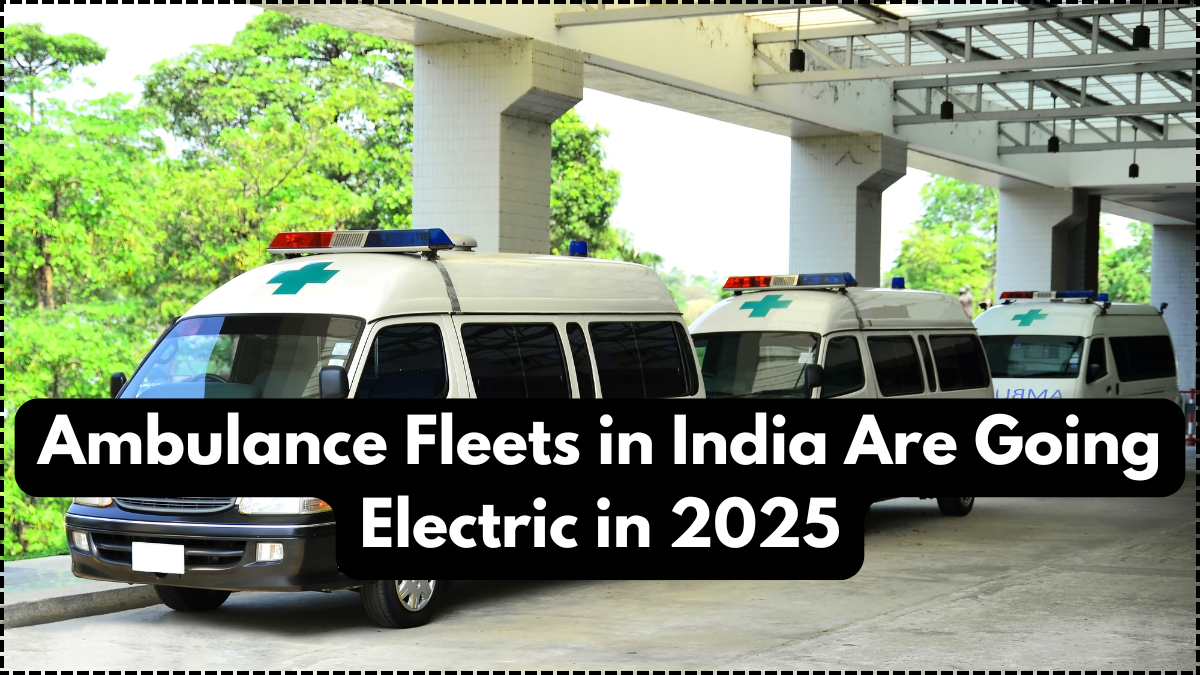In July 2025, ambulance EVs 2025 are revolutionizing India’s emergency medical services by introducing an advanced, efficient, and eco-friendly emergency EV fleet. The integration of electric ambulances is helping healthcare providers deliver quicker response times, reduce carbon emissions, and lower operational costs. This transition is a critical step towards modernizing India’s healthcare infrastructure while supporting national sustainability goals.
The shift to electric ambulances reflects a growing commitment from government bodies and private healthcare operators to improve urban and rural emergency response systems through cleaner transportation.

Advantages of Electric Ambulances in Emergency Services
The deployment of ambulance EVs 2025 offers significant advantages over traditional diesel-powered ambulances:
-
Faster Response Times: Electric motors provide instant torque for quicker acceleration, crucial in emergencies.
-
Lower Operating Costs: Reduced fuel consumption and minimal maintenance decrease overall expenses.
-
Reduced Pollution: Zero tailpipe emissions improve air quality, especially in congested urban centers.
-
Quieter Operation: Noise reduction benefits patients and emergency staff during transport.
-
Sustainability: Aligns with India’s climate targets and clean energy initiatives.
These benefits make electric ambulances a practical and responsible choice for the future.
Adoption and Deployment of Emergency EV Fleets Across India
The Indian government and healthcare providers are rapidly expanding emergency EV fleet adoption in multiple states. The table below shows key cities and states leading the transition along with the number of electric ambulances deployed in 2025:
| Region | Number of Electric Ambulances | Key Features | Support Programs |
|---|---|---|---|
| Delhi NCR | 150 | Fast charging, advanced medical equipment | Government subsidies, PPP models |
| Maharashtra | 120 | Long-range battery, telemedicine-ready | Public-private partnerships |
| Tamil Nadu | 90 | Compact design for urban traffic | State clean transport incentives |
| Karnataka | 75 | Solar-powered charging stations | EV infrastructure grants |
| Gujarat | 60 | Modular interiors for diverse emergencies | Health ministry initiatives |
This expanding footprint demonstrates India’s commitment to making emergency healthcare more accessible and sustainable.
Challenges and Solutions in Scaling Electric Ambulance Fleets
Despite promising developments, challenges remain in adopting ambulance EVs 2025 nationwide:
-
Charging Infrastructure: Adequate fast-charging facilities are critical for quick turnaround times.
-
High Initial Costs: Electric ambulances have higher upfront prices compared to conventional models.
-
Battery Range Limitations: Ensuring sufficient range for rural and extended emergency routes.
-
Training and Maintenance: Specialized training for EMS staff and technicians on EV systems is needed.
To overcome these, collaborative efforts between governments, private healthcare, and EV manufacturers are focused on infrastructure development, financing schemes, and capacity building.
Impact on Healthcare and Environmental Sustainability
The move towards ambulance EVs 2025 benefits both healthcare outcomes and environmental health by:
-
Enabling faster, more reliable emergency services in urban and remote areas
-
Reducing greenhouse gas emissions contributing to climate change mitigation
-
Lowering operational costs, freeing up funds for other healthcare needs
-
Promoting awareness of electric vehicle benefits in public sectors
Electric ambulance fleets serve as a model for integrating green technology into critical public services.
Conclusion
In July 2025, the introduction and expansion of ambulance EVs 2025 are transforming India’s emergency medical services with cleaner, faster, and more cost-effective solutions. The growing emergency EV fleet represents a milestone in combining healthcare innovation with environmental stewardship. As challenges are addressed and infrastructure improves, electric ambulances are set to become the standard across India’s healthcare landscape.
FAQs
What are the key benefits of electric ambulances over diesel models?
Electric ambulances provide faster acceleration, lower operating costs, reduced emissions, and quieter operation.
Which Indian states are leading the adoption of electric ambulance fleets?
Delhi NCR, Maharashtra, Tamil Nadu, Karnataka, and Gujarat are among the top regions expanding their EV ambulance fleets.
How is the charging infrastructure being developed for electric ambulances?
Governments and private partners are setting up fast-charging stations, including solar-powered options, to support ambulance operations.
Are there any government incentives for electric ambulance procurement?
Yes, several states and the central government offer subsidies and grants to promote electric ambulance adoption.
click here to learn more